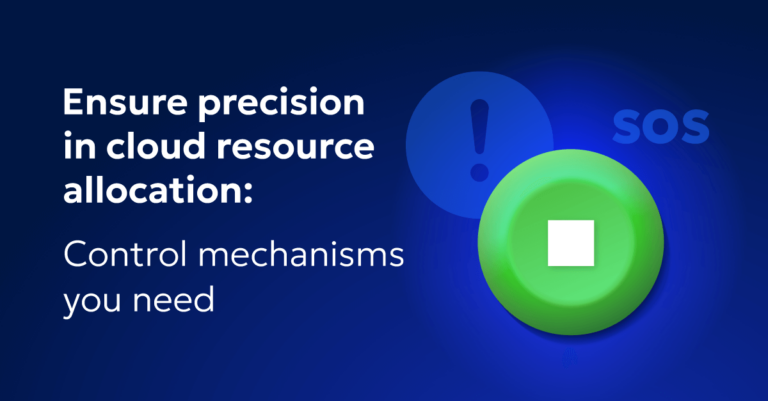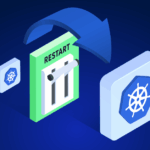
Ensure precision in cloud resource allocation: Control mechanisms you need

ITFM Consultant
Managing cloud costs can be daunting, especially when you’re dealing with tight budgets and high expectations. As a FinOps professional, I understand this challenge well. In my early days as a finOps, I’ve made my share of mistakes in allocating costs and resources, also some which had financial repercussions for the business. Each misstep taught me valuable lessons and drove me to refine my strategies to avoid repeating the same errors. As a perfectionist, I know the importance of proper resource allocation and the financial consequences of getting it wrong. Because I’ve made these mistakes, I want to help you avoid them. Let me share some practical control mechanisms to help you overcome common challenges and take command of your cloud budget.
Overcome cloud cost allocation challenges with effective control mechanisms
Complexity of cloud environments
Cloud environments can be a tangled web of services and resources spread across different regions and accounts. This complexity often makes tracking and allocating costs feel like an impossible task. According to Gartner, 80% of enterprises will overshoot their cloud budgets through 2024 due to the complexity of their cloud environments. Believe me, I’ve been there, and it can be overwhelming.
Early in my career, I worked with a mid-sized tech company that had grown its cloud environment rapidly. The complexity was through the roof. Services were scattered across regions, and accounts were poorly managed. It felt like we were drowning in data, unable to get a clear picture of our spending. This experience taught me the importance of streamlined management tools.
Control mechanism: Adopt a cloud management platform (CMP) Using a CMP provides better visibility and control over your cloud environment. These platforms offer detailed cost tracking, automated recommendations, and comprehensive reporting features.
Action: Implement a CMP to centralize and automate cost management. This ensures accurate and up-to-date allocation data.
Best practice tagging practices
Tagging resources is crucial for cost allocation, but inconsistent or incorrect tagging can lead to inaccurate data and poor visibility into spending. I remember the chaos of inconsistent tagging early in my career. One project tagged resources diligently, while another ignored tags altogether. The result was a mess of data that took forever to untangle.
Control mechanism: Implement a consistent and stringent tagging strategy. Establish clear tagging policies and ensure all teams adhere to them. Regularly audit tags for consistency and accuracy. Proper tagging allows you to categorize and track spending by specific projects, departments, or teams.
Action: Develop a comprehensive tagging strategy, train your team on its importance, and conduct regular audits to maintain accuracy.
Dynamic nature of cloud usage
You and I know, that cloud usage patterns can change rapidly, with resources being provisioned and deprovisioned frequently. This dynamism complicates cost allocation and tracking. Gartner forecasts that worldwide IT spending is expected to grow by 8% in 2024, driven by increased investments in cloud services and emerging technologies. However, this growth also highlights the potential for significant waste, with estimates suggesting that billions could be lost due to inefficient cloud usage and management. I’ve seen firsthand how frustrating it can be to keep up with these changes.
In one instance, our development team frequently spun up new instances for testing, often forgetting to shut them down. Our costs skyrocketed before we realized what was happening. It was a painful lesson that taught me the value of automated oversight.
Control mechanism: Standardize naming conventions. Develop and enforce standardized naming conventions across the organization to ensure uniformity. This reduces discrepancies and makes it easier to track and allocate costs.
Action: Create a naming convention policy and ensure it is followed organization-wide. Review and update the policy as needed.
Limited visibility and transparency
Without proper tools and practices, it can be challenging to gain full visibility into cloud spending. This lack of transparency hinders effective cost allocation and control. I’ve felt the pain of not having clear insights into spending.
I once managed a project where the cloud costs seemed to balloon without warning. It turned out that several teams were using services without proper cost tracking, making it impossible to see the full picture. This drove me to find better tools for transparency.
Control mechanism: Enhance visibility and transparency Use comprehensive monitoring and reporting tools to gain full visibility into cloud spending. Enhanced transparency helps in identifying high-spending areas and optimizing resource use.
Action: Implement monitoring tools that offer real-time visibility into cloud costs, such as AWS Cost Explorer, Azure Cost Management, and Google Cloud Cost Management.
Data silos
In large organizations, data related to cloud usage and costs might be siloed within different departments or teams, making it difficult to get a consolidated view. I’ve worked in environments where breaking down these silos was a constant battle.
At one company, each department managed its cloud resources independently. Without a centralized view, we struggled to allocate costs accurately and missed significant savings opportunities. This made it clear that integration was key.
Control mechanism: Integrate data sources. Break down data silos by integrating data from various sources. This provides a consolidated view of cloud costs, making it easier to manage and allocate expenses accurately.
Action: Use integration tools to combine data from different departments and cloud services, ensuring a holistic view of your cloud spending.
Manual processes
When you rely on manual processes for cost allocation, it can be time-consuming and you will quickly encounter errors. It also makes it difficult to scale up and down in dynamic cloud environments. I’ve seen firsthand how manual processes can bog down a team.
In my early FinOps days, we used spreadsheets to track costs. It was tedious, and errors were common. We wasted hours reconciling data, which could have been spent on more strategic tasks. Automation was the game-changer here.
Control mechanism: Automate cost allocation. Integrate tools that automate the cost allocation process. Automation reduces manual effort and minimizes errors, which will not just help you save time but also allocate cloud costs in a more accurate way.
Action: Invest in automation tools that integrate with your CMP to streamline cost allocation tasks and maintain accuracy.
Shared resources
When you allocate costs for shared resources, such as databases or networking infrastructure, you will face challenging scenarios. It’s often difficult to determine how much each department or project should be charged. I’ve struggled with this, and it’s no easy task.
At one point, our shared database costs were spiraling out of control. We had no clear method for dividing the costs, leading to disputes and budget overruns. This experience underscored the need for clear policies.
Control mechanism: Develop allocation policies for shared resources Create fair and transparent policies for allocating costs of shared resources. This ensures that costs are distributed equitably and reflect actual usage.
Action: Establish guidelines for shared resource allocation, and use usage data to distribute costs fairly among departments.
Take control of your cloud costs
Cloud spending is soaring, making precise resource allocation essential. Use these control mechanisms to manage your cloud budget effectively. Implement a Cloud Management Platform (CMP), develop a tagging strategy, standardize naming conventions, automate cost allocation, enhance visibility, integrate data sources, and create allocation policies for shared resources.
Cloud cost optimization can be straightforward. With the right approach, you can make informed decisions quickly and easily. Stay precise, and watch your cloud costs decrease while efficiency soars!
Related Articles
-
Why it’s time to get off the manual Kubernetes optimization treadmill
August 14, 2025 -
Zesty now supports In-Place Pod Resizing for Seamless, Real-Time Vertical Scaling
July 30, 2025 -
The endless cycle of manual K8s cost optimization is costing you
July 2, 2025 -
This is the #1 cloud budget killer (and it’s easier to fix than you think)
June 16, 2025 -
Are Kubernetes users right to ignore VPA?
April 29, 2025







